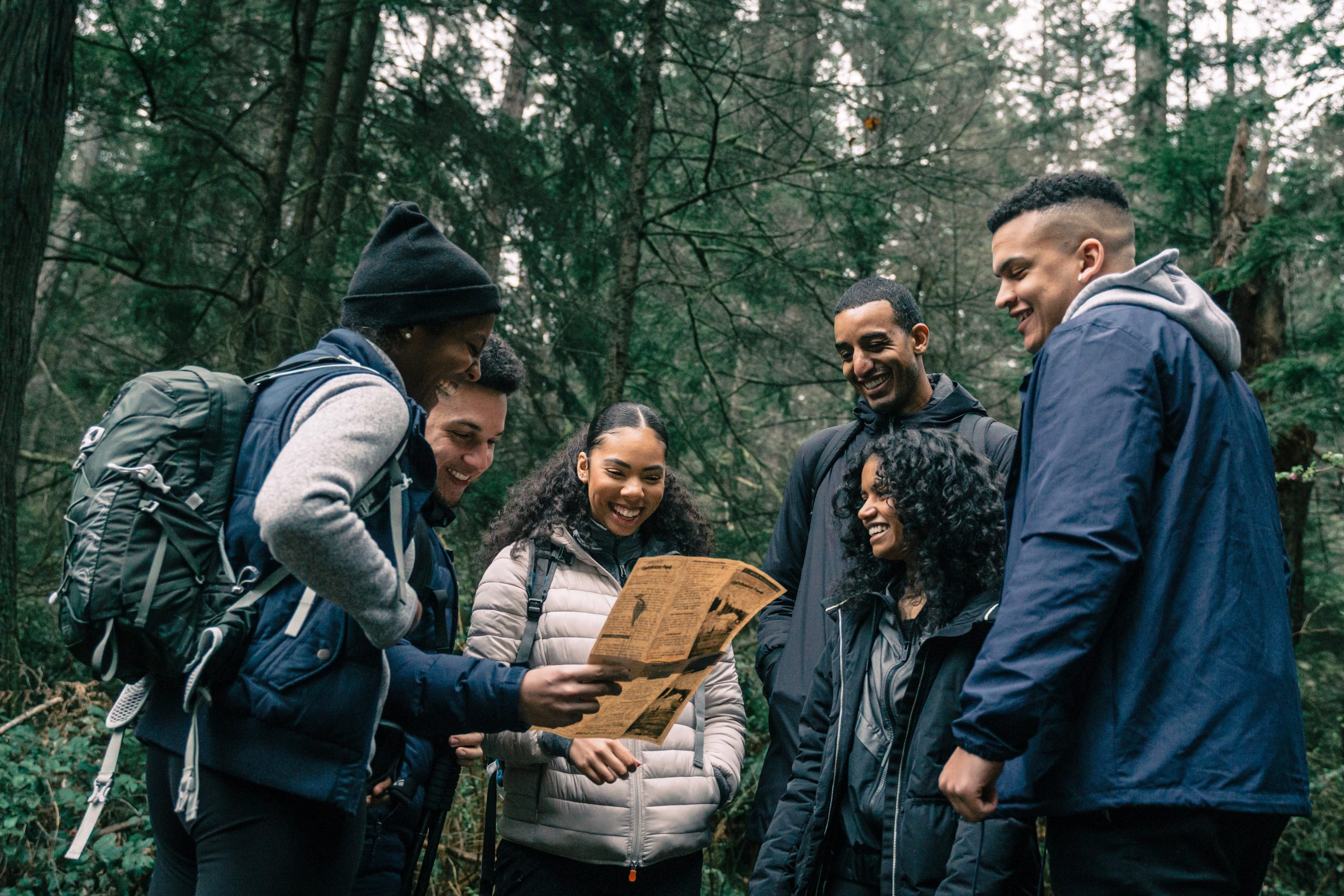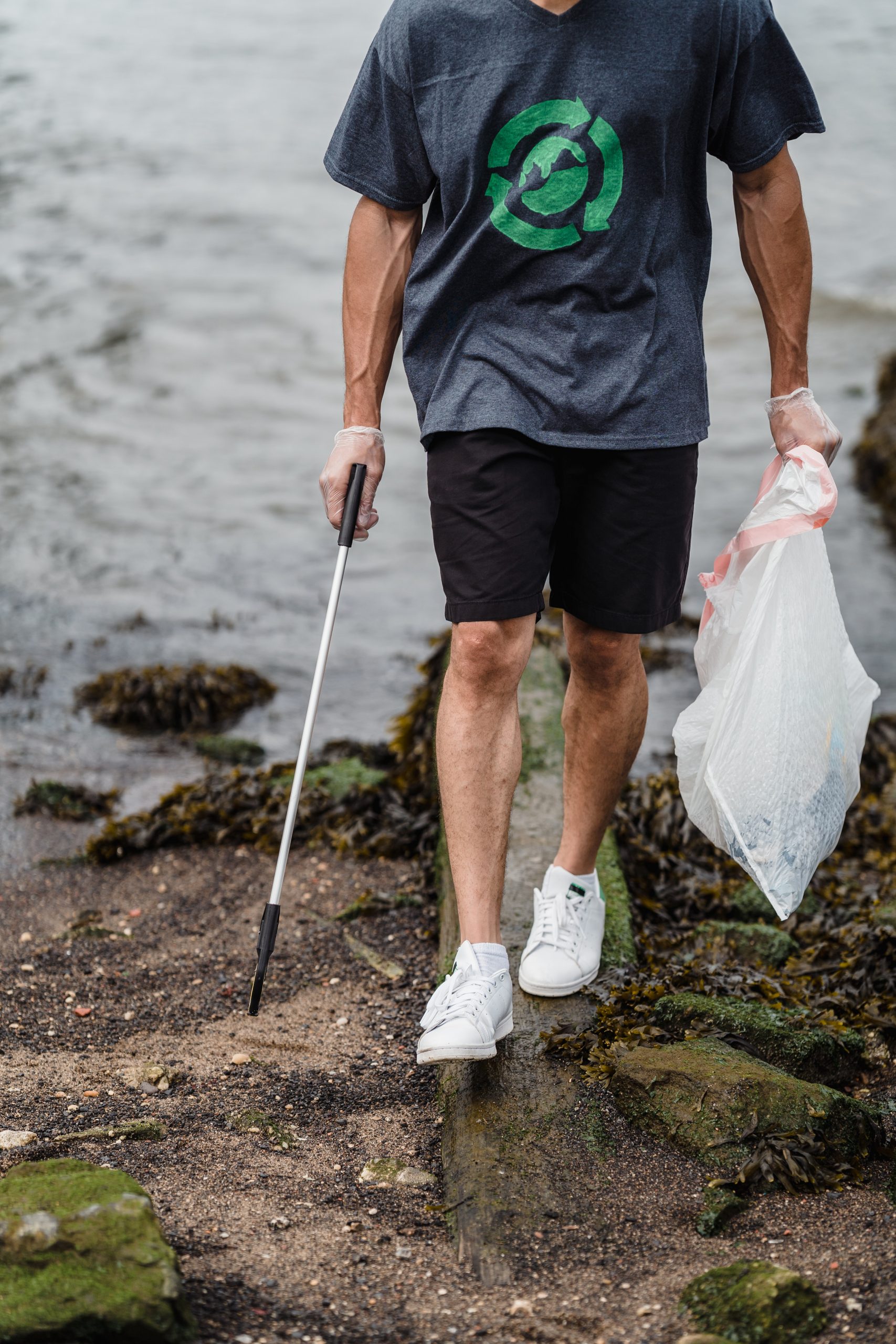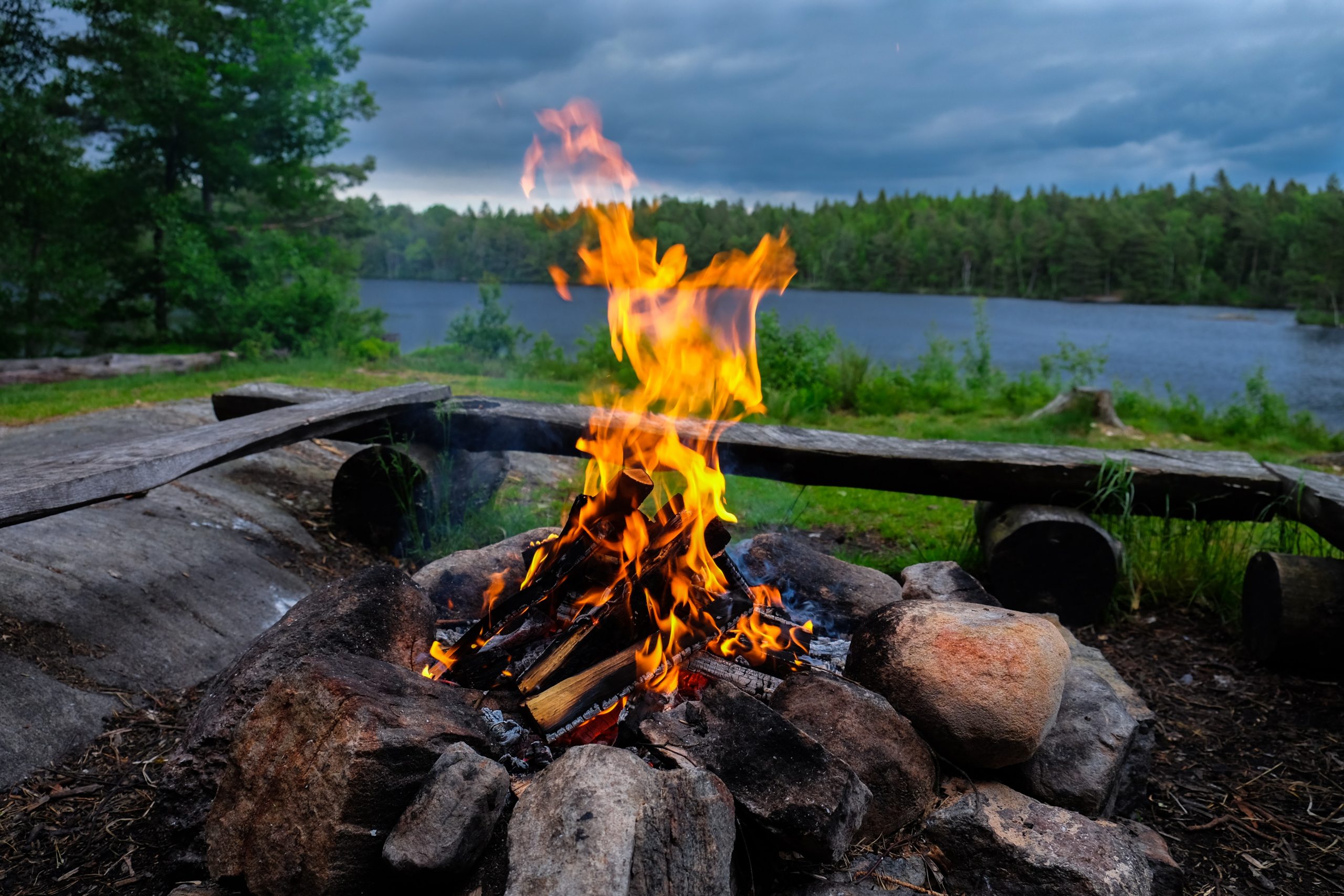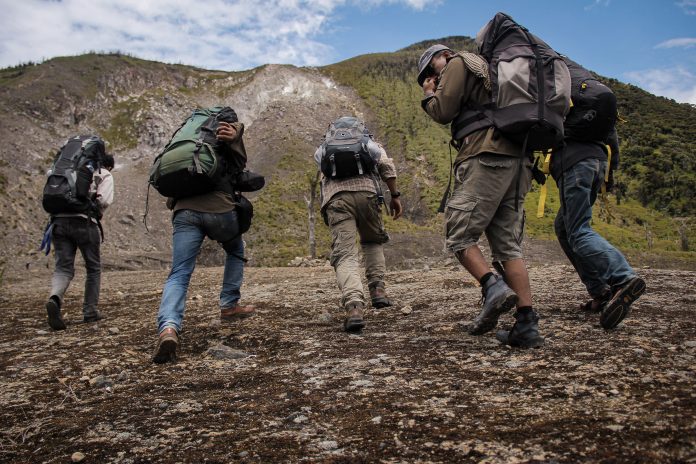INTRODUCTION
Explanation of the importance of minimizing the impact on the environment while hiking
Minimizing impact on the environment while hiking is important for several reasons:
Conservation: Hiking in natural areas can have a significant impact on the ecosystem and its wildlife if not done responsibly. By minimizing your impact, you help to preserve the area for future generations to enjoy.
Sustainability: Minimizing impact helps to ensure that the area remains healthy and sustainable, allowing for continued recreational use in the future.
Respect for nature: Hiking in nature should be a respectful experience for both you and the environment. Minimizing impact shows respect for the delicate balance of nature and helps to maintain the natural beauty of the area.
Leave no trace: The principle of “leave no trace” is a key aspect of responsible hiking, which encourages hikers to minimize their impact on the environment by leaving the area as they found it.
By following principles such as staying on designated trails, properly disposing of waste, and avoiding damage to vegetation and wildlife, hikers can significantly reduce their impact on the environment while enjoying the great outdoors.
EXPLANATION OF THE IMPORTANCE OF RESPECTING OTHER HIKERS WHILE ON THE TRAIL
Respecting other hikers while on the trail is important for several reasons:
- Safety: By respecting the rights and safety of other hikers, you help to ensure that everyone on the trail has a safe and enjoyable experience. This includes yielding the trail to hikers going uphill, keeping a safe distance, and avoiding dangerous behavior.
- Etiquette: Hiking is a shared experience, and respecting other hikers is an essential aspect of trail etiquette. This includes not littering, not disturbing wildlife, and not making excessive noise.
- Enjoyment: Respecting other hikers helps to create a peaceful and enjoyable atmosphere on the trail, allowing everyone to fully immerse themselves in nature and enjoy the experience.
- Conservation: By respecting other hikers, you help to preserve the trail and the surrounding environment for future generations to enjoy. This includes following the principles of “leave no trace” and avoiding damage to the trail or its surroundings.
By being considerate and respectful of others, hikers can create a positive and harmonious environment on the trail, promoting enjoyment and preservation for all who use it.
Research on the trail and its rules and regulations

Before heading out on a hike, it is important to research the trail and familiarize yourself with its rules and regulations. This information can be found through a variety of sources, including:
- National or state park websites: National and state parks often have websites that provide detailed information about their trails, including maps, trail conditions, and rules and regulations.
- Trail guides and maps: Trail guides and maps are another great resource for information on trails and their rules and regulations. These guides can provide detailed information on trail lengths, elevations, and other important information.
- Local hiking organizations: Local hiking organizations, such as hiking clubs or outdoor retailers, may have additional information about specific trails and their rules and regulations.
- Park rangers: Park rangers are a valuable source of information on trails and their rules and regulations. They can provide information on trail conditions, safety concerns, and other important details.
By researching the trail and its rules and regulations beforehand, hikers can be better prepared and make the most of their experience while minimizing their impact on the environment and respecting other hikers.
Selecting gear that is eco-friendly
When selecting gear for hiking, choosing gear that is eco-friendly can help to minimize the impact on the environment and promote sustainability. Some steps to consider when selecting eco-friendly gear include:
Choose gear made from sustainable materials: Look for gear made from recycled or biodegradable materials, such as recycled polyester or natural fibers like hemp or cotton.
Consider the lifecycle of the gear: Look for gear that has a long lifespan and can be repaired or reused, rather than disposable gear that will end up in landfills.
Support environmentally responsible companies: Choose gear from companies that have a commitment to sustainability, such as using renewable energy, reducing waste, and using sustainable materials.
Reduce packaging: Minimize waste by choosing gear with minimal packaging and choosing to recycle the packaging when possible.
Invest in quality gear: Investing in quality gear that will last can reduce the need for frequent replacements and minimize waste in the long run.
By taking these steps to choose eco-friendly gear, hikers can help to minimize their impact on the environment and promote sustainability while enjoying the great outdoors.
Planning ahead to avoid overcrowding and peak hours
Planning ahead to avoid overcrowding and peak hours is an important aspect of responsible hiking that helps to minimize impact on the environment and promote a positive experience for all hikers. Some steps to consider when planning your hike include:
Choose off-peak times: Try to choose a time for your hike when the trail is less crowded, such as mid-week or during the shoulder season.
Plan for alternative trails: If the trail you are interested in is known to be particularly busy, consider finding an alternative trail that may be less crowded.
Consider the weather: Hiking during inclement weather, such as rain or snow, can help to reduce the number of hikers on the trail.
Respect trail closures: If a trail is closed due to overuse or environmental concerns, respect the closure and choose another trail to hike.
By planning ahead and considering these factors, hikers can help to avoid overcrowding and peak hours on the trail, reducing impact on the environment and ensuring a positive experience for all hikers.
Minimizing the impact on the environment

Minimizing the impact on the environment while hiking is an important aspect of responsible hiking that helps to preserve the natural environment and promote sustainability. Some steps to consider when minimizing impact on the environment include:
- Follow Leave No Trace principles: Adhere to the principles of “leave no trace,” which include minimizing waste and avoiding damage to the environment and its wildlife.
- Respect wildlife: Observe wildlife from a safe distance and avoid disturbing or harassing them in any way.
- Stay on designated trails: Avoid creating new trails or shortcuts, as this can cause damage to the environment and create erosion.
- Avoid littering: Pack out all trash and dispose of it properly, and consider carrying a small trash bag to collect litter along the way.
- Be mindful of fire: Use established fire rings or portable stoves for cooking and avoid building fires in areas where they are not permitted.
By following these steps and being mindful of your impact on the environment, hikers can help to preserve and protect the natural environment for future generations to enjoy.
Staying on the designated trail
Staying on the designated trail is an important aspect of responsible hiking that helps to minimize impact on the environment and protect sensitive ecosystems. Some reasons to stay on the designated trail include:
- Protecting vegetation: When hikers venture off the trail, they can cause damage to vegetation, including trampling delicate plants and disturbing the soil.
- Preventing erosion: Staying on the designated trail helps to prevent erosion, as new trails and shortcuts can cause soil erosion and damage the environment.
- Preserving wildlife habitats: By staying on the designated trail, hikers can avoid disturbing wildlife habitats, which can disrupt the natural balance of the ecosystem and harm wildlife.
- Minimizing impact on cultural resources: Hiking off the designated trail can also impact cultural resources, such as archaeological sites, and it is often against the law.
By staying on the designated trail, hikers can help to protect the environment, preserve natural resources, and minimize their impact on the environment.
Pack in, pack out all trash
The “pack it in, pack it out” principle is an important aspect of responsible hiking that helps to minimize waste and keep the environment clean. It means that hikers should take all of their trash with them when they leave the trail and dispose of it properly, rather than leaving it behind.
By following this principle, hikers can help to reduce litter in the natural environment and minimize the impact of human activity on the environment. This includes not just obvious trash, such as food packaging and water bottles, but also smaller items such as fruit peels, candy wrappers, and cigarette butts.
By packing out all trash and properly disposing of it, hikers can help to keep the environment clean and preserve the natural beauty of the trail for future generations to enjoy.
Leave natural habitats undisturbed
Leaving natural habitats undisturbed is an important aspect of responsible hiking that helps to preserve the environment and protect wildlife. Some steps to consider when leaving natural habitats undisturbed include:
- Avoid disturbing wildlife: Observe wildlife from a safe distance and avoid disturbing or harassing them in any way.
- Respect protected areas: Do not enter areas designated as protected or off-limits, as this can damage sensitive ecosystems and harm wildlife.
- Leave flowers and plants alone: Avoid picking flowers or other vegetation, as this can disturb the natural balance of the ecosystem and harm wildlife.
- Leave rocks and artifacts in place: Do not remove rocks, fossils, or other natural artifacts, as this can disrupt the environment and harm wildlife.
- Leave no trace: Follow the principles of “leave no trace,” which include minimizing waste and avoiding damage to the environment and its wildlife.
By following these steps and leaving natural habitats undisturbed, hikers can help to protect and preserve the environment, maintain the natural balance of ecosystems, and ensure that wildlife can continue to thrive in their natural habitats.
Be mindful of fire and water usage

Being mindful of fire and water usage is an important aspect of responsible hiking that helps to minimize impact on the environment. Some steps to consider when being mindful of fire and water usage include:
- Use established fire rings or portable stoves: When cooking, use established fire rings or portable stoves, and avoid building fires in areas where they are not permitted.
- Follow fire safety rules: When using a fire, follow fire safety rules, such as keeping the fire small and under control, and putting it out completely before leaving.
- Use water sources responsibly: When accessing water sources, such as streams or lakes, do so responsibly and avoid contaminating the water with soap, food waste, or other pollutants.
- Consider bringing a water filter: Consider bringing a water filter or other purification system, rather than relying on disposable plastic water bottles, to reduce waste and minimize impact on the environment.
By being mindful of fire and water usage and following these steps, hikers can help to minimize impact on the environment, conserve natural resources, and protect water sources for future generations to enjoy.
Respecting other hikers
Respecting other hikers is an important aspect of responsible hiking that helps to create a positive and enjoyable experience for everyone on the trail. Some ways to respect other hikers include:
- Yielding the trail: When hiking, yield the trail to other hikers, such as those traveling uphill, and let them pass.
- Keeping noise levels down: Keep noise levels down and avoid disturbing other hikers, such as by talking loudly or playing music.
- Staying on the designated trail: Stay on the designated trail to avoid disturbing other hikers and to minimize impact on the environment.
- Avoiding overcrowding: Plan ahead and avoid overcrowding on the trail by visiting during off-peak hours or choosing a less popular trail.
- Being considerate: Be considerate of other hikers by leaving no trace, following trail rules, and being mindful of other people’s space and experiences.
By respecting other hikers and following these steps, hikers can help to create a positive and enjoyable experience for everyone on the trail, foster a sense of community, and help to preserve the natural beauty of the trail for future generations to enjoy.
Being quiet and avoiding loud noises
Being quiet and avoiding loud noises is an important aspect of responsible hiking that helps to create a peaceful and enjoyable experience for everyone on the trail. Some ways to be quiet and avoid loud noises include:
- Keeping noise levels down: Avoid making loud noises, such as talking loudly or playing music, and keep noise levels down.
- Being mindful of wildlife: Avoid making loud noises that may disturb wildlife, as this can cause stress and disruption to the natural environment.
- Respecting other hikers: Be mindful of other hikers’ experiences and avoid making loud noises that may disturb them.
- Using headphones: If listening to music, use headphones rather than playing music out loud, to avoid disturbing other hikers and wildlife.
By being quiet and avoiding loud noises, hikers can help to create a peaceful and enjoyable experience for everyone on the trail, foster a sense of community, and help to preserve the natural beauty of the trail for future generations to enjoy.
Allowing others to pass and yielding the trail
Allowing others to pass and yielding the trail is an important aspect of responsible hiking that helps to create a positive and enjoyable experience for everyone on the trail. Some ways to allow others to pass and yield the trail include:
- Yielding the trail to others: When hiking, yield the trail to other hikers, such as those traveling uphill, and let them pass.
- Moving to the side of the trail: Move to the side of the trail when allowing others to pass, to avoid blocking the trail and causing congestion.
- Being courteous: When encountering other hikers, be courteous and greet them with a friendly smile or nod.
- Being patient: When waiting for others to pass, be patient and avoid rushing or pushing.
By allowing others to pass and yielding the trail, hikers can help to create a positive and enjoyable experience for everyone on the trail, foster a sense of community, and help to preserve the natural beauty of the trail for future generations to enjoy.
Keeping dogs on a leash and cleaning up after them

Keeping dogs on a leash and cleaning up after them is an important aspect of responsible hiking that helps to create a positive and enjoyable experience for everyone on the trail. Some ways to keep dogs on a leash and clean up after them include:
Keeping dogs on a leash: When hiking with dogs, keep them on a leash to avoid disturbing wildlife, other hikers, and to maintain control of the dog.
Cleaning up after dogs: Clean up after dogs and dispose of waste properly, such as by carrying out pet waste bags or using designated pet waste stations.
Following trail rules: Follow trail rules and regulations, such as those related to dogs, to avoid disturbing other hikers and to help preserve the natural beauty of the trail.
By keeping dogs on a leash and cleaning up after them, hikers can help to create a positive and enjoyable experience for everyone on the trail, foster a sense of community, and help to preserve the natural beauty of the trail for future generations to enjoy. You can also try Pedigree dog food while hiking with your dog.
Avoiding littering and other forms of pollution
To avoid littering and other forms of pollution, individuals can take the following steps:
- Reduce waste by reusing items and recycling when possible.
- Properly dispose of litter, such as by using trash cans or taking litter home to be disposed of properly.
- Use environmentally friendly products, such as those with minimal packaging or biodegradable materials.
- Carpool, walk, or use public transportation instead of driving to reduce air pollution
- Support clean energy sources, such as wind and solar power, to reduce reliance on fossil fuels that contribute to air and water pollution.
- Educate others about the importance of reducing pollution and preserving the environment.
Avoiding littering and other forms of pollution
Avoiding littering and other forms of pollution can help keep our environment clean and healthy. Some steps to reduce pollution include:
Reduce waste by reusing and recycling items when possible.
Properly dispose of hazardous materials, such as batteries and chemicals, at designated facilities.
Avoid single-use plastics, such as straws and plastic bags, and bring reusable bags, water bottles, and containers when shopping.
Support environmentally-friendly transportation, such as biking, walking, or using public transportation, instead of driving a personal vehicle.
Plant trees and support initiatives to restore degraded or deforested areas.
Support companies and organizations that are environmentally responsible and work to reduce pollution.
Educate others about the importance of reducing pollution and the harmful effects it can have on the environment and human health.
Final thoughts on the role of each individual in preserving and protecting the environment while hiking.
The role of each individual in preserving and protecting the environment while hiking is critical. Every hiker has the power to make a positive impact by following a few simple guidelines:
- Stay on designated trails to prevent erosion and damage to vegetation.
- Pack out all trash, including food scraps and packaging, and dispose of it properly.
- Respect wildlife by observing it from a distance and avoiding disturbing their habitats.
- Use a camp stove instead of making fires, or if fires are allowed, use established fire rings and keep fires small.
- Practice Leave No Trace principles, such as not cutting switchbacks, and properly disposing of human waste.
- Minimize your use of soap, toothpaste, and other personal care products to reduce the impact of these chemicals on water sources.
- Support conservation efforts by joining organizations and advocacy groups that work to protect natural areas and wildlife habitats.
By taking these steps, each individual can play a role in preserving and protecting the environment for future generations to enjoy.














